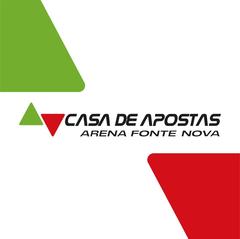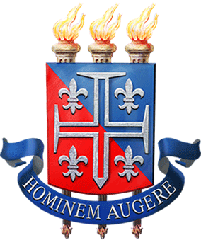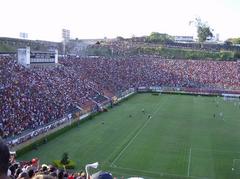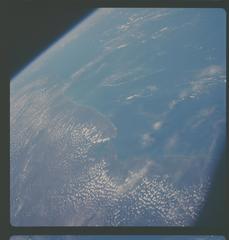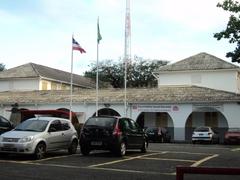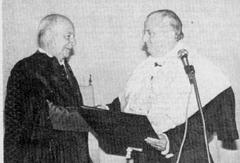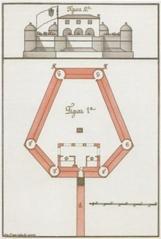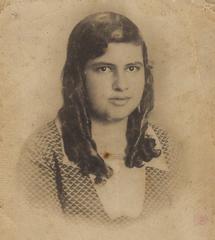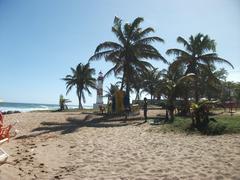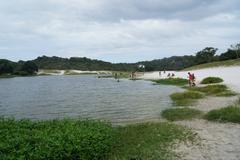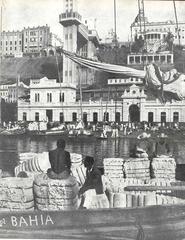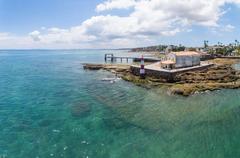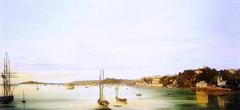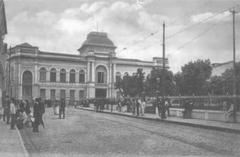Coluna À Maria Felipa: Visiting Hours, Tickets, and Historical Significance in Salvador, Brazil
Date: 14/06/2025
Introduction
Nestled in the vibrant heart of Salvador, Bahia, the Coluna À Maria Felipa stands as a powerful tribute to Maria Felipa de Oliveira—an Afro-Brazilian heroine whose courage and leadership played a decisive role in Bahia’s independence struggle. This comprehensive guide explores Maria Felipa’s legacy, the monument’s significance, practical visitor information (including hours, ticket details, and accessibility), and tips to enrich your experience. Whether you’re a history enthusiast or a cultural traveler, discover how this landmark connects you to the enduring spirit of Afro-Brazilian resilience and empowerment (A Verdade, A Tarde, Casa Maria Felipa).
Table of Contents
- Introduction
- Who Was Maria Felipa? Her Legacy in Bahia
- Maria Felipa and Bahia’s Independence Struggle
- Memorials and Monuments Honoring Maria Felipa
- The Coluna À Maria Felipa Monument: Artistic Features and Location
- Cultural and Social Impact of the Monument
- Visitor Guide: Hours, Tickets, Accessibility, and Tips
- Nearby Attractions and Cultural Sites
- Frequently Asked Questions (FAQ)
- Conclusion and Travel Resources
- References
Who Was Maria Felipa? Her Legacy in Bahia
Maria Felipa de Oliveira was a Black woman of Sudanese heritage born on Itaparica Island, Bahia. Living as a freedwoman in the late 18th and early 19th centuries, she became renowned for her leadership in the Afro-Brazilian community. Working as a marisqueira (shellfish gatherer), fisherman, and ganhadeira, Maria Felipa’s daily life reflected the realities and resilience of Black women in Bahia (Multirio).
Her attire—chinelos (sandals), saia rodada (full skirt), bata (blouse), and a symbolic turbante adorned with adinkra motifs—demonstrated a deep connection to African heritage and the philosophy of learning from the past, embodied by the sankofa symbol (Multirio).
Maria Felipa and Bahia’s Independence Struggle
Historical Context
After Dom Pedro I’s 1822 independence proclamation, Portuguese control persisted in Bahia, making Salvador and Itaparica Island pivotal resistance sites (Salvador da Bahia). The conflict reached a climax in 1823, with the local population mobilizing against colonial forces.
Leadership and Tactics
Maria Felipa led a group of about 40 women—known as “vedetas”—who acted as spies, informants, and combatants. Their operations included monitoring Portuguese naval movements, providing intelligence, and supporting resistance fighters. In one legendary episode, Maria Felipa’s group deceived Portuguese soldiers, incapacitated them with the stinging local plant “cansanção,” and set fire to enemy ships, crippling the Portuguese navy’s efforts (Brazilian History).
Impact and Recognition
These acts of bravery were pivotal in the eventual Brazilian victory on July 2, 1823. Though Maria Felipa’s heroism was long preserved mainly through oral tradition, her story is now widely recognized as central to Bahia’s independence and Afro-Brazilian history.
Memorials and Monuments Honoring Maria Felipa
Casa Maria Felipa Cultural Center
This cultural center in Salvador is dedicated to Maria Felipa’s life and Afro-Brazilian heritage. It offers exhibitions, educational activities, and community events.
- Address: Rua do Sodré, Salvador, Bahia
- Hours: Tuesday–Sunday, 9:00 AM–5:00 PM
- Admission: Free
- Accessibility: Wheelchair accessible
- Website: Casa Maria Felipa
Maria Felipa Monument on Itaparica Island
A public monument commemorates her leadership during the independence struggle.
- Location: Praça Maria Felipa, Itaparica Island
- Hours: Open 24/7
- Access: Ferry from Salvador to Itaparica; guided historical tours available
The Coluna À Maria Felipa Monument: Artistic Features and Location
Artistic Features
Inaugurated in June 2024, the Coluna À Maria Felipa monument was created by Bahian artist Nádia Taquary. The 3-meter-tall statue, crafted from resin and fiberglass, stands in Praça Cairu, Comércio district. Maria Felipa’s figure gazes toward Itaparica Island, symbolizing her maritime roots and resistance (A Tarde).
An interactive QR code integrated into the monument provides visitors with multimedia content about Maria Felipa and Bahia’s independence, enhancing education and engagement (A Tarde).
Location and Accessibility
- Address: Praça Cairu, Comércio, Salvador, Bahia, Brazil
- Accessibility: Flat, paved surroundings suitable for wheelchairs and strollers
- Getting There: Short walk from Mercado Modelo and Elevador Lacerda; accessible via public transport, taxi, or rideshare (Live More Travel More)
Cultural and Social Impact of the Monument
The unveiling of the Coluna À Maria Felipa marked a significant moment in Salvador’s public memory, acknowledging the overlooked contributions of Black women in Brazilian history. The monument was inaugurated during “Julho das Pretas” (Black Women’s July), reinforcing its role in celebrating Afro-Brazilian resilience and female empowerment (Anota Bahia).
Cultural performances, community gatherings, and educational activities frequently animate the site, especially during Bahia’s Independence Day and Afro-Brazilian heritage celebrations. The monument serves as a hub for social movements and public rituals, such as the “Ocupação Maria Felipa” community initiative (A Verdade).
Visitor Guide: Hours, Tickets, Accessibility, and Tips
Visiting Hours and Tickets
- Open: 24/7, as the monument is in a public square
- Admission: Free; no tickets required
- Best Times: Daylight hours (8:00 AM–6:00 PM) for safety and optimal viewing
Accessibility and Amenities
- Wheelchair Access: Yes, with paved walkways and ramps
- Restrooms: Public facilities nearby (basic)
- Nearby Services: Cafes, restaurants, ATMs, and souvenir shops in the Comércio district
Guided Tours and Learning
- Guided Tours: Available through local tour operators; check with hotels or visitor centers
- Interpretation: Informational plaques and QR codes provide historical context in Portuguese and English
Photography and Social Media
- Photography: Encouraged; use hashtags like #ColunaMariaFelipa and #SalvadorBahia
- Etiquette: Do not climb or deface the monument; respect its cultural significance
Safety and Travel Tips
- Exercise standard urban caution—secure valuables, avoid isolated areas after dark
- Use ATMs inside banks or shopping centers during the day
- Travel in groups or with a guide if visiting early or late
- Carry travel insurance and stay hydrated during outdoor visits (Caroline Rose Travel)
Sustainable Tourism
- Support local artisans and businesses
- Participate respectfully in community events and cultural programs
Nearby Attractions and Cultural Sites
- Mercado Modelo: Crafts and Bahian cuisine
- Elevador Lacerda: Iconic city elevator connecting upper and lower Salvador
- Pelourinho: Historic center with colonial architecture
- Cidade da Música da Bahia: Cultural center celebrating Bahian music
- Casa das Histórias de Salvador: Museum dedicated to Salvador’s history
Frequently Asked Questions (FAQ)
Q: What are the Coluna À Maria Felipa visiting hours?
A: The monument is accessible 24/7, but visiting during daylight is recommended.
Q: Is there an entrance fee or ticket required?
A: No, visiting is free.
Q: Are guided tours available?
A: Yes, several local operators include the monument in their tours.
Q: Is the monument accessible for people with disabilities?
A: Yes, Praça Cairu and the monument area are wheelchair accessible.
Q: Can I take photos at the monument?
A: Yes, photography is encouraged.
Conclusion and Travel Resources
The Coluna À Maria Felipa is not just a monument—it is a living symbol of Afro-Brazilian identity, female leadership, and the ongoing struggle for recognition and justice. Its artistic design, historical context, and central location make it a vital destination for anyone seeking to understand Salvador’s layered history.
Plan your visit during daylight for the best experience. Enhance your journey by exploring nearby attractions, participating in cultural events, and engaging with educational resources like the Audiala app for guided audio tours.
References and Further Reading
- Maria Felipa de Oliveira, guerreira negra e heroína da independência, 2023, Multirio (Multirio)
- Monumento dedicado a Maria Felipa é inaugurado em Salvador, 2024, A Tarde (A Tarde)
- Maria Felipa de Oliveira: Negra, pobre e heroína, 2012, A Verdade (A Verdade)
- Visiting Salvador Bahia: Travel Guide, 2023, Live More Travel More (Live More Travel More)
- Brazilian History: Women in the Brazilian Independence, 2023, Brazilian History (Brazilian History)
- The 2nd of July Independence of Brazil in Bahia, 2023, Salvador da Bahia (Salvador da Bahia)
- Official Salvador Tourism Website, 2024, Salvador da Bahia (Salvador da Bahia)
- Ocupação Maria Felipa é exemplo de luta popular em Salvador, 2023, A Verdade (A Verdade)
- BBC Article on Maria Felipa
- G1 Globo Coverage
- Cidade Baixa Praça Cairu
- Caroline Rose Travel
